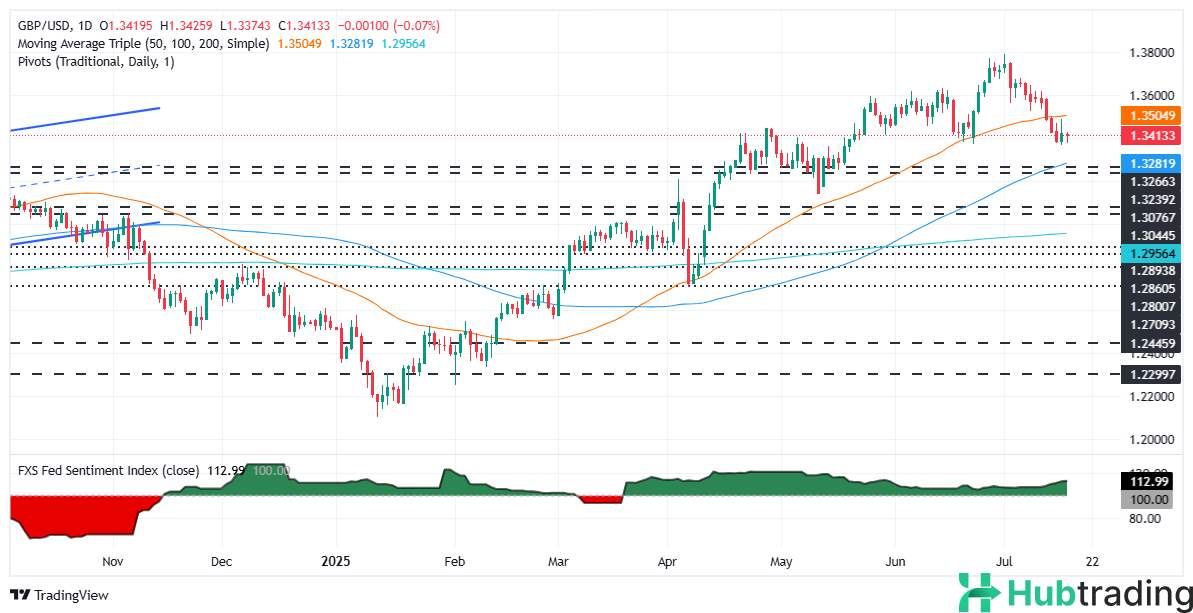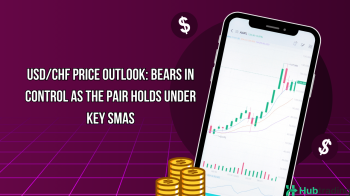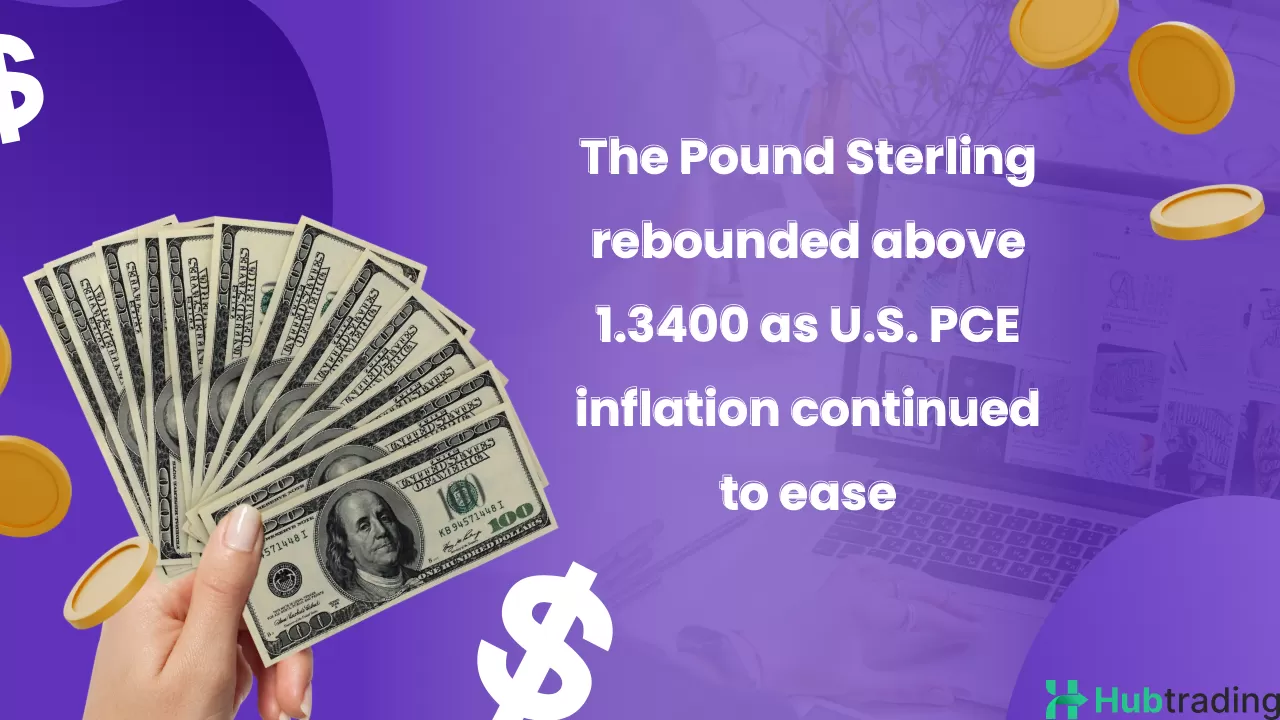-
U.S. jobless claims drop to 221K, and June retail sales increase by 0.6%.
-
Fed’s Kugler signals caution on rate cuts as tariff-related inflation builds.
-
UK labor market shows resilience, but Pound stays under pressure.
GBP/USD fell during Thursday’s North American session, slipping 0.07% to 1.3408 as robust U.S. economic data lifted the U.S. Dollar to fresh July highs. The pair extended its decline as markets reacted to upbeat jobless claims and retail sales figures, which supported the Fed’s "higher for longer" interest rate stance.
U.S. Economic Strength Pushes Dollar Higher
The latest report from the Bureau of Labor Statistics (BLS) showed Initial Jobless Claims fell to 221K for the week ending July 12, beating expectations of 235K and signaling continued labor market strength. Meanwhile, June Retail Sales rose 0.6% month-over-month, far surpassing the expected 0.1% increase. These stronger-than-expected figures, coupled with last week’s hot CPI report, significantly lowered the likelihood of a rate cut at the Fed’s July meeting.
Fed Governor Adriana Kugler echoed this sentiment, stating that current economic conditions justify keeping interest rates steady “for some time,” especially with low unemployment and rising inflation pressures from tariffs.
In the UK, labor market data showed a slower-than-expected cooling. The Claimant Count Change for June rose by 25.9K, higher than the consensus forecast of 17.9K, but lower than May’s 33.1K increase. Despite signs of resilience, the British Pound remained under pressure against a strengthening U.S. Dollar.
Market jitters over a potential removal of Fed Chair Jerome Powell by U.S. President Donald Trump eased after Trump confirmed he has no plans to fire Powell—though he continued to urge the Fed to cut interest rates.
GBP/USD Technical Outlook: Bias Tilts Bearish

From a technical perspective, GBP/USD holds a neutral-to-bearish bias, trading near weekly lows after briefly spiking to a two-day high of 1.3485 on Powell-related headlines. The Relative Strength Index (RSI) remains subdued, suggesting sellers are still in control despite some buying interest near the 1.3400 level.
To shift momentum, bulls would need to reclaim the 50-day Simple Moving Average (SMA) at 1.3500. If the bearish pressure persists, the next downside targets include the July 17 low at 1.3373, followed by 1.3300 and the 100-day SMA at 1.3278.





